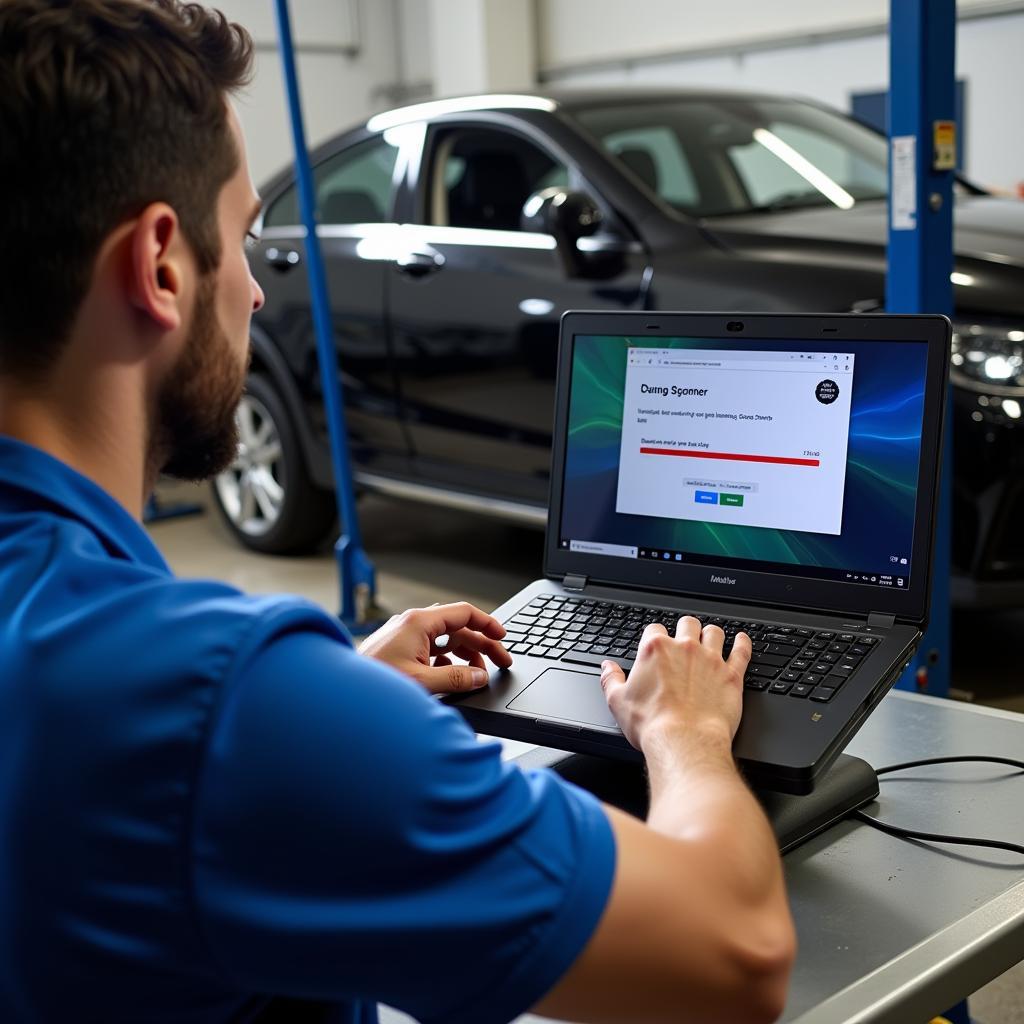Experiencing that dreaded check engine light on your 1998 Dodge Ram 1500 can be frustrating, especially without a scan tool to decipher the code. Don’t worry, you can still troubleshoot those pesky 1998 Dodge Ram 1500 check engine codes without specialized equipment. This article will guide you through some common causes and potential solutions, empowering you to take charge of your truck’s health.
Understanding Your 1998 Dodge Ram 1500 Check Engine Light
The check engine light, often glowing amber or orange, is your truck’s way of communicating a potential issue within its engine or emissions systems. While a scan tool provides specific diagnostic trouble codes (DTCs), there are ways to narrow down the possibilities even without one.
Common Causes of 1998 Dodge Ram 1500 Check Engine Codes
A range of issues can trigger the check engine light in your 1998 Dodge Ram 1500. Here are some common culprits:
1. Loose Gas Cap: The Usual Suspect
Believe it or not, a loose or missing gas cap is one of the most frequent causes of check engine lights across various vehicle models, including the 1998 Dodge Ram 1500. A poorly sealed gas cap can disrupt the fuel system’s pressure, leading to emissions problems.
Solution: Ensure your gas cap is securely tightened. If the cap is damaged or worn, replace it with a new one.
2. Faulty Oxygen Sensor: The Emissions Guardian
Oxygen sensors play a crucial role in monitoring exhaust gases and optimizing fuel-air mixture. A malfunctioning oxygen sensor can significantly impact engine performance and fuel efficiency, triggering the check engine light.
Solution: While diagnosing a faulty oxygen sensor without a scan tool can be challenging, look out for symptoms like decreased fuel economy, rough idling, or a sulfurous odor from the exhaust. If you suspect a faulty oxygen sensor, consult a mechanic for diagnosis and replacement.
3. Mass Air Flow (MAF) Sensor Issues: The Airflow Manager
The MAF sensor measures the amount of air entering the engine, helping the engine control unit (ECU) adjust fuel delivery for optimal combustion. A dirty or malfunctioning MAF sensor can disrupt this process, leading to various performance issues.
Solution: Carefully remove the MAF sensor, which is usually located between the air filter and the throttle body. Use a MAF sensor cleaner to gently clean the delicate wires. If cleaning doesn’t resolve the issue, consider replacing the sensor.
4. Spark Plug Problems: The Ignition Source
Worn-out or fouled spark plugs can cause misfires, reducing engine performance and potentially harming the catalytic converter.
Solution: Inspect your spark plugs for signs of wear and tear, such as excessive gaps or deposits. Replace worn-out plugs and consider adjusting the gap on newer plugs according to your truck’s specifications.
5. Catalytic Converter Failure: The Emissions Control Center
The catalytic converter plays a vital role in reducing harmful exhaust emissions. Over time, a catalytic converter can become clogged or fail, significantly impacting engine performance and emissions.
Solution: Identifying a failing catalytic converter without a scan tool can be tricky. Look for symptoms like reduced engine power, a rattling sound from beneath the vehicle, or a sulfur-like smell from the exhaust. If you suspect a catalytic converter issue, consult a qualified mechanic for inspection and potential replacement.
Tips for Troubleshooting Without a Scan Tool
- Check Engine Light Behavior: Pay close attention to how the check engine light behaves. A flashing light typically indicates a more serious problem that requires immediate attention.
- Visual Inspection: Conduct a thorough visual inspection of the engine bay, looking for any loose connections, damaged wires, or vacuum leaks.
- Listen Carefully: Listen for any unusual noises coming from the engine, such as knocking, hissing, or rattling.
- Consult Your Owner’s Manual: Your owner’s manual can be a valuable resource for troubleshooting basic engine problems.
When in Doubt, Seek Professional Help
While these tips can help you address some common causes of 1998 Dodge Ram 1500 check engine codes without a scan tool, it’s crucial to remember that a proper diagnosis is key to resolving the underlying issue. If you’re unable to pinpoint the problem or if the check engine light persists, consult a qualified mechanic or visit a trusted auto parts store for assistance.
Remember, a well-maintained truck is a happy truck!
Need Help with Your 1998 Dodge Ram 1500?
We understand that dealing with check engine codes can be frustrating. At ScanToolUS, we’re here to help you get back on the road with confidence. Contact our team of automotive experts at +1 (641) 206-8880 or visit our office at 1615 S Laramie Ave, Cicero, IL 60804, USA, for expert advice and top-quality diagnostic tools. Let us help you keep your 1998 Dodge Ram 1500 running smoothly for miles to come!

